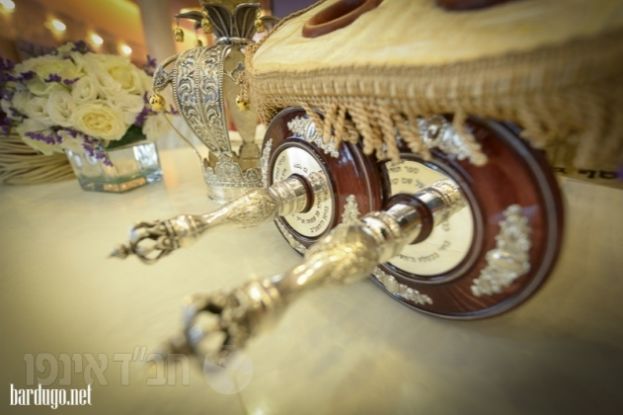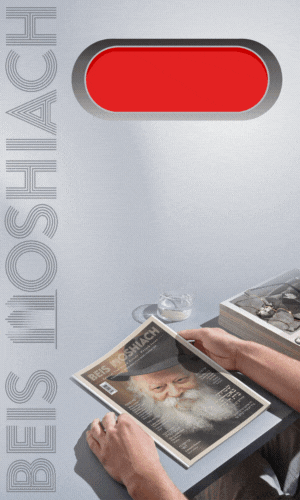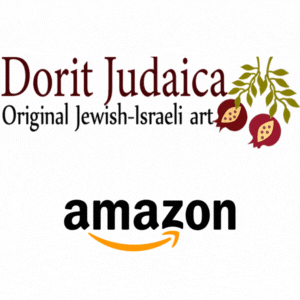The Story Behind the Torah Gemach
“Every sefer Torah has its own mazel,” says Mr. Bentzion Chanowitz, proprietor of the Bais Yisroel Torah Gemach and Torah Loan Society in Brooklyn, New York. Chanowitz should know, having initiated and presided over a charity that essentially acts as a Torah shadchan, placing different sifrei Torah, old and new, in new homes all over the world • Full Story
“Every sefer Torah has its own mazel,” says Mr. Bentzion Chanowitz, proprietor of the Bais Yisroel Torah Gemach and Torah Loan Society in Brooklyn, New York. Chanowitz should know, having initiated and presided over a charity that essentially acts as a Torah shadchan, placing different sifrei Torah, old and new, in new homes all over the world.
A Gemach Is Born
What started out as one act of chessed slowly grew into an extensive operation that Mr. Bentzion Chanowitz, a pharmacist living in Flatbush, views as the ultimate opportunity to “disseminate Yiddishkeit.” In the seven years that he has been running the gemach, he went from placing 10 sifrei Torah in the first year to 180 sifrei Torah by the seventh year.
The first Torah in the gemach was one that Mr. Chanowitz’s father bought from a shul called Chovevei Torah in Crown Heights. Chanowitz remembers how the dwindling Jewish population back then impacted the shul and its membership. “The shul was going down at the time,” Chanowitz says. “Crown Heights was changing and people were all moving out. There were two men left on the shul’s board and they put my father on the board. They made an agreement that after one year in which there was no minyan in the main sanctuary, the building would be sold for one dollar. All the assets would be converted into money and distributed to other shuls in the community, because it was considered community money.”
That’s exactly what happened. The old shul, a beautiful, vast structure with women’s sections on both upper sides, was closed and sold. “My father was able to buy a sefer Torah, which needed fixing up, for $1,000 at that time,” Chanowitz remembers. “He found a sofer who was a bachur and gave him a key to the house. He would come in and out when he found time to fix it.”
Eventually, Chanowitz inherited that sefer Torah. Instead of keeping it in his home, he decided to loan it to a nearby shul that had only one other sefer Torah. “At that time, I had no idea of what I was going to do with it later or how things would evolve.”
When asked what gave him the idea for a gemach, Chanowitz said it was a gradual development that stemmed from his desire to help the wider Jewish community and his recognition of the resources that could be tapped into. “This is a community that has so many hidden resources and people don’t understand it or know how to harness them.”
Chanowitz, who is Lubavitch, says that a Chabad perspective helped shape his outlook. “When shluchim go out to the boondocks, they might go with initial funding. Thereafter, they’re on their own and it’s swim or sink. And many sink because it’s not cut out for them. I saw their need for extra resources, whether that be sifrei Torah or other necessities, because they’re all raising money on their own. I realized that for me to afford to provide them with sifrei Torah, I would need to fund-raise from the wider Jewish community. But then I understood that I should also service that wider community.”
Seven years ago, when Chanowitz was at Ateret Torah, a Sephardic minyan, for Minchah, he stopped to talk to a man who told Chanowitz he was “sitting on sifrei Torah” from his father, who didn’t want him to become a sofer because he was a lefty (most sofrim are right-handed). “I got my second and third sifrei Torah from him right then, and that got me started. I started asking shuls if they had sifrei Torah they didn’t use that might be sitting in the back of their aron kodesh.”
Slowly, the gemach started growing. It currently has a long list of shuls and other minyanim in need of sifrei Torah. Chanowitz is keen to obtain older sifrei Torah no longer in use. “For a sefer Torah to sit in the back of an aron and be taken out just for Kol Nidrei or hakafos is a little bit of a bushah.”
A Multi-Step Process
Some of these older sifrei Torah are heavy. Chanowitz explains, “What used to happen before they had safes to hold sifrei Torah is that mice used to eat the klaf because it’s made out of hide. To counteract that, they would whitewash the back of the klaf with a plaster. This created two problems — it made the sefer Torah heavier, and if someone was rough when they were rolling it back and forth, the plaster would rub against the letters and take off the letters. In recent years, people have begun keeping sifrei Torah in safes, and technology has allowed for the use of lighter-weight, smaller klafs as well.”
Before a sefer Torah is considered for use, it goes through a rigorous checking process. For that purpose, the gemach has an official Rav, Rabbi Yochanan Marsow, who is consulted on all halachic issues pertaining to the sifrei Torah.
“I have criteria to be met for me to spend a certain amount to restore a sefer Torah,” Chanowitz maintains. “First, a sofer comes and does a general check to ascertain if it can go into the gemach. If the letters are jumping because the klaf is too brittle, or if the original sofer made the ink in a way that didn’t solidify, or if it was stored in a place where the temperature was too cold, then no matter how many times you fix it, it won’t be good.”
Chanowitz will spend up to $6,000 to refurbish a sefer Torah. Sifrei Torah that would cost more to fix will often end up in sheimos, or sometimes parts may be salvageable by using them to replace sections of other damaged scrolls.
Chanowitz insists on paying the sofer by the hour to ensure that he takes his time. “If the sofer charges per job, then either I’m going to lose or he’s going to lose. I’m dealing with tzedakah money and I don’t want him to do a rush job. For me, it’s reassuring knowing that I will get back a good, kosher sefer Torah.”
Sometimes it’s necessary to have a computer check as well. However, Chanowitz says, “If I get an older sefer Torah, I will not do a computer check and rely on its chezkas kashrus since it was read from many times. That’s also why I pay by the hour to make sure the sofer is thorough about checking.”
Chanowitz thinks the most difficult part about obtaining a sefer Torah for the gemach lies in its inherent value. It’s like asking someone to use his “baby” for a few years. But in a case where a person is willing to not just lend a Torah but donate it for a tax write-off and give up ownership, he won’t allow it. “If someone gives me a $100 donation, then he did a mitzvah. But each time someone leins from a loaned sefer Torah, the donor gets more mitzvos. How can I allow someone to give up all those mitzvos?”
Instead, the transaction is done in the form of a lease. And that involves getting insurance. “Just like when you lease a car you have to get insurance, I won’t give out a sefer Torah unless there’s liability insurance with a fine arts rider on it. People often tell me that they have a safe, but a safe is not as important as insurance, because if, chas v’shalom, there’s a fire, the safe starts cooking and the klaf will shrivel.”
Because of the hazards of protecting such delicate material, shipping is a paramount part of the process and follows rabbinic guidelines. A sefer Torah is meticulously and painstakingly wrapped, with written instructions marking it as fragile and indicating which side is up. “I ship it as artwork and insure it for a high amount, so they treat it with kid gloves because they understand it’s something of value. If it’s out of the country, someone has to take it personally.”
The mission statement of the gemach stipulates its purpose is “to provide primary and secondary sifrei Torah [to places in need] until they have a permanent solution.” This means that, although the gemach does have a few sifrei Torah set aside for short-term loans, the average loan is long term.
When asked if he finds that shuls delay returning the sifrei Torah, Chanowitz replies that it’s a give and take. “If a minyan starts growing and people see a mantle that says ‘Bais Yisroel Torah Gemach,’ they’ll say, ‘What is that?’” When they hear about the gemach, they will be motivated to raise the money for a sefer Torah of their own, instead of using a loaner.
Sifrei Torah All Over the World
The gemach now has sifrei Torah all over the world, from Brooklyn, Monsey and Lakewood to places as far-flung as Vietnam, China, Ukraine, Colombia, India and many in Eretz Yisrael. Some of them commemorate significant events, often infusing tragedies with bitachon.
Last Lag BaOmer, Chanowitz flew to Poway, Calif., to dedicate a new sefer Torah sponsored by the Jaffa Family Foundation to the Chabad of Poway. The sefer Torah was in memory of Mrs. Lori Gilbert-Kaye, Hy”d. The hachnasas sefer Torah drew throngs of participants.
“A sefer Torah brings a community together,” Chanowitz explains. “And I understood that after the 15 minutes of fame that Rabbi Goldstein and the Poway community got, they needed to heal. The sefer Torah was a tool used to heal.”
There are other sifrei Torah that honor what Chanowitz calls “a theme.” Two mantles dedicated to the victims of the Pittsburgh terrorist attack are in a shul in Philadelphia. The gemach also sponsored a hachnasas sefer Torah for the six Dallas police officers killed in the 2016 shooting attack. “I asked a she’eilah at the time because none of the officers was Jewish and I was told that throughout history there were times when Jews did something for the non-Jewish community because they helped them. I felt it was important for the police department and the Dallas community to see that the Jews are out there for them.”
The gemach has also dedicated mantles for Ichud Hatzalah, for Israeli terror victims, and for Caliber 3, the counter-terror and security training academy in Gush Etzion, Eretz Yisrael. Inspired by a trip to the training camp, Chanowitz heard that the program was dedicated l’iluy nishmas Chagai Lev, Hy”d, a commander killed by terrorists in a Gaza incursion.
“I told the owner, who happened to be Chagai Lev’s brother-in-law, that he is doing something for shleimus haAretz from a gashmiyus perspective, and I want to do something from a ruchniyus perspective. I don’t think he believed me, but a couple of months later we made a hachnasas sefer Torah in Israel. The sefer Torah went to what was the first secular socialist kibbutz in Israel, Deganiah Aleph. There are people there trying to become more religious. I think from all the places in the world that I have a sefer Torah, this is my badge of honor.”
Finding His Niche
This and other experiences motivate Chanowitz — who also works full time as a pharmacist — despite the demands the gemach places on him. He reports that his sense of fulfillment outweighs the effort and permeates his home. There are times when his dining room is full of sifrei Torah. And even his wife “now knows how to do gelilah!”
The gemach’s success also provides an answer to skeptics. Chanowitz admits, “There’s an undertone in the Flatbush community, both Ashkenaz and Sephard, questioning why so many people are making hachnasos sifrei Torah when there are already so many sifrei Torah in shuls, instead of using the money for a ‘living Torah’ like yeshivah tuition and scholarships. So when I approach a shul and ask them for their older, unused sifrei Torah, [the shul can respond to those skeptics] that the new Torah is replacing an older one that was given to a different community.”
Mr. Chanowitz identifies with the Talmudic concept, “Ani lo nivreisi ela l’shamesh es Koni,” maintaining that doing this mitzvah does not give him “metzius,” something tangible in return, since he helps Jews all over the world without ever meeting them.
Mr. Chanowitz insists every person can apply the concept of selfless giving to himself. “Everyone has ideas of chessed that they want to do. Hashem instilled this idea in me and I was able to go with it. This should be a lesson for everyone — find a niche that you have and go with it.”
124
Join ChabadInfo's News Roundup and alerts for the HOTTEST Chabad news and updates!










































